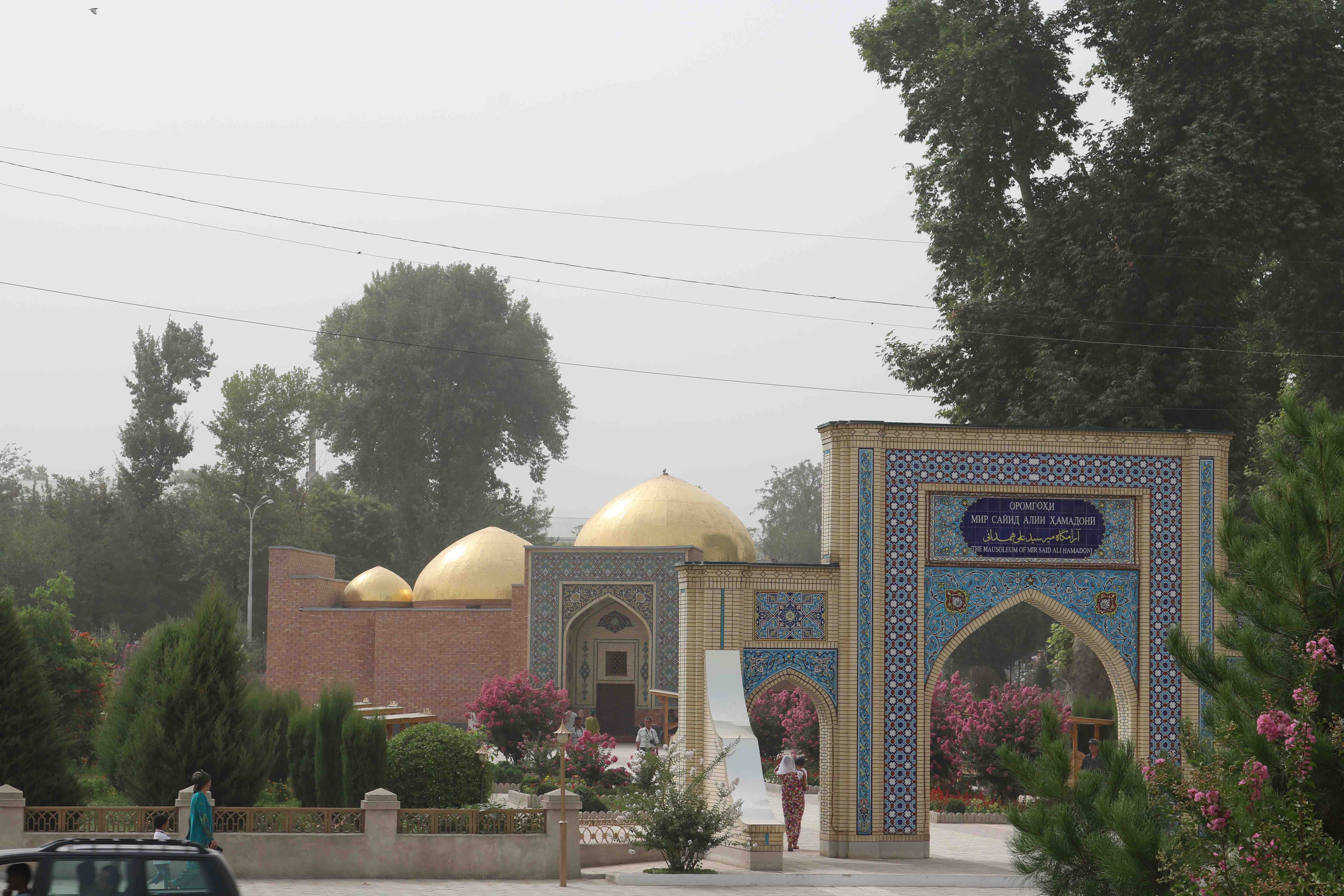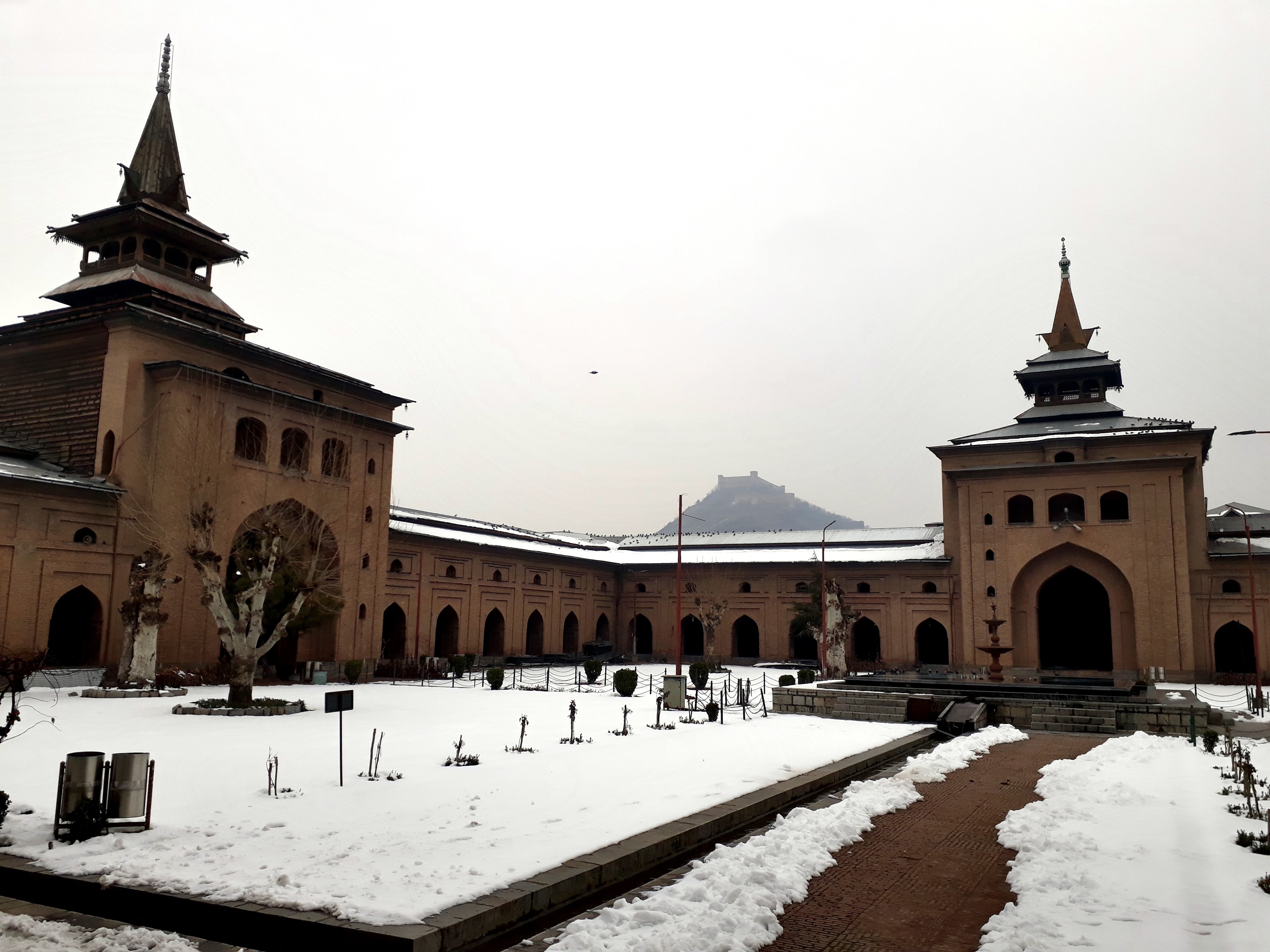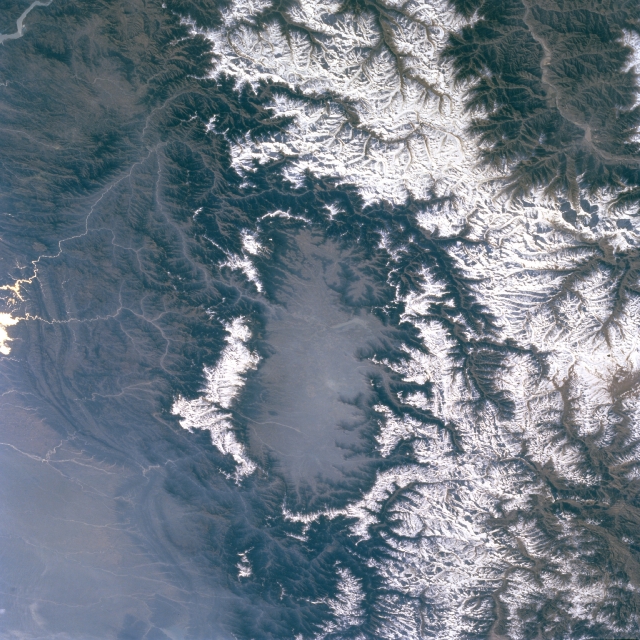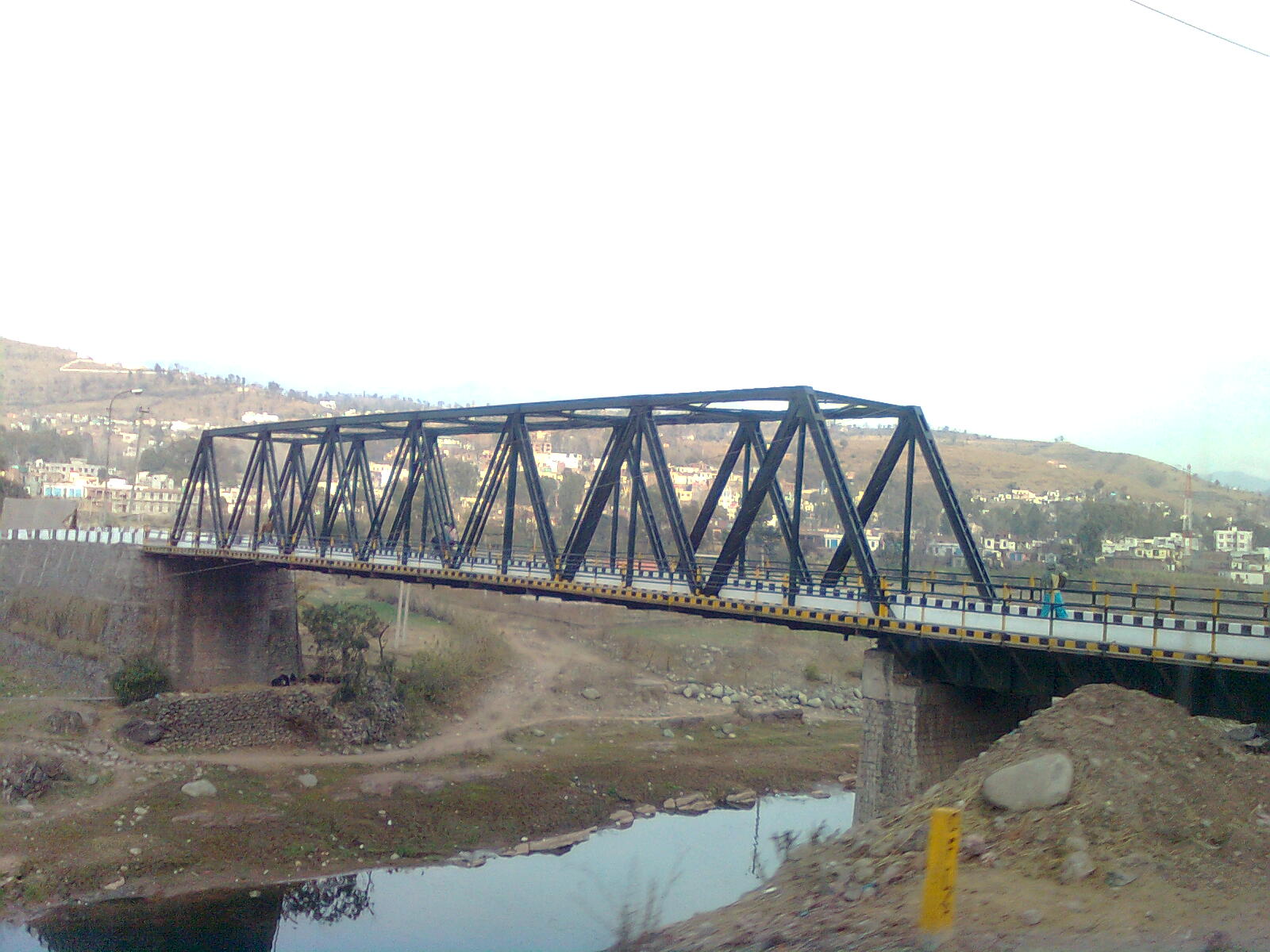|
Shah Mir Dynasty
The Shah Mir dynasty was a dynasty that ruled the region of Kashmir in the Indian subcontinent. The dynasty is named after its founder, Shah Mir. During the rule of the dynasty from 1339 to 1561, Islam forcefully established in Kashmir. Origins The dynasty was established by Shah Mir in 1339 CE, there are two theories regarding Shah Mir's origin. Historian A. Q. Rafiqi states that some Persian chronicles of Kashmir describe Shah Mir as a descendant of the rulers of Swat. He thinks it more likely that he was a descendant of Turkish or Persian immigrants to Swat, who had intermarried with local indigenous peoples. It has also been suggested that he belonged to a family which accompanied the sage Mir Sayyid Ali Hamadani, and who were associated to either the Kubrawiya، Sufi groups in Kashmir. According to Jonaraja, Shah Mir was the descendant of Partha (Arjuna) of Mahabharata fame. Abu ’l-Fadl Allami, Nizam al-Din and Firishta also state that Shah Mir traced his descent to Arju ... [...More Info...] [...Related Items...] OR: [Wikipedia] [Google] [Baidu] |
Fath Shah
Fath Shah was a Sultan of the Shah Mir dynasty of Kashmir. Fath took the throne of Kashmir in 1486 CE. Muhammad Shah regained the throne in 1495 but Fath soon after retook it in 1516 after killing Muhammad Shah in a battle near Kupwara and occupying the throne of Srinagar once again. Fath Shah reconstructed the towns of Pulwama and Anantnag. In 1533 Kashmir was raided by the Turco-Mongol military general Mirza Muhammad Haidar Dughlat who was fighting on behalf of the Sultan of the Yarkent Khanate, Sultan Said Khan. Mirza Muhammad Haidar Dughlat conquered Kashmir in the year 1540 thereby abolishing the Shah Mir dynasty. [...More Info...] [...Related Items...] OR: [Wikipedia] [Google] [Baidu] |
Mir Sayyid Ali Hamadani
Mir Sayyid Ali Hamadani ( fa, میر سید علی همدانی; CE) was a Persian scholar, poet and a Sufi Muslim saint of the Kubrawiya order. He was born in Hamadan, Iran and preached Islam in Central Asia and Kashmir as he travelled to practice Sufism. He died in Kashmir and was buried in Khatlan, Tajikistan in 1384 CE, aged 71–72. Hamadani was also addressed honorifically throughout his life as the ''Shāh-e-Hamadān'' ("King of Hamadan"), ''Amīr-i Kabīr'' ("the Great Commander"), and ''Ali Sani'' ("second Ali"). Early life The title "Sayyid" indicates that he was a descendant of the Islamic prophet Muhammad, possibly from both sides of his family. Hamadani spent his early years under the tutelage of Ala ud-Daula Simnani, a famous Kubrawiya saint from Semnan, Iran. Despite his teacher's opposition to Ibn Arabi's explication of the ''wahdat al-wujud'' ("unity of existence"), Hamadani wrote ''Risala-i-Wujudiyya'', a tract in defense of that doctrine, as well as two ... [...More Info...] [...Related Items...] OR: [Wikipedia] [Google] [Baidu] |
Sikandar Shah Miri
Sikandar Shah (Sikandar Butshikan – "Sikandar, the Iconoclast") was the sixth sultan of the Shah Miri dynasty of Kashmir from 1389 to 1413. Sources The only contemporaneous source that exists is the Rajatarangini (lit. Flow of Succession of Kings) by Jonaraja. Jonaraja was the Brahmin court-poet of Sikandar's successor Zain-ul-Abidin and was commissioned to continue Kalhana's Rajatarangini. One manuscript of his work—edited between 1561 and 1588 by an anonymous person using information from other sources—emends certain portions of the text in the margins; he is conventionally called (and the work, Ps-JRT) in scholarship. Extant Persian sources, including Baharistan-i-shahi (anon.), Tohfatu'l-Ahbab (anon.) and Tarikh-i-Kashmir corpus, were written relatively later and drew from recensions of Rajatarangini(s) but they provide considerable additional information. These were later used by authors starting from Abul Fazl, the first chronicler from outside Kashmir and Niza ... [...More Info...] [...Related Items...] OR: [Wikipedia] [Google] [Baidu] |
Sufi
Sufism ( ar, ''aṣ-ṣūfiyya''), also known as Tasawwuf ( ''at-taṣawwuf''), is a mystic body of religious practice, found mainly within Sunni Islam but also within Shia Islam, which is characterized by a focus on Islamic spirituality, ritualism, asceticism and esotericism. It has been variously defined as "Islamic mysticism",Martin Lings, ''What is Sufism?'' (Lahore: Suhail Academy, 2005; first imp. 1983, second imp. 1999), p.15 "the mystical expression of Islamic faith", "the inward dimension of Islam", "the phenomenon of mysticism within Islam", the "main manifestation and the most important and central crystallization" of mystical practice in Islam, and "the interiorization and intensification of Islamic faith and practice". Practitioners of Sufism are referred to as "Sufis" (from , ), and historically typically belonged to "orders" known as (pl. ) – congregations formed around a grand who would be the last in a chain of successive teachers linking back to Muha ... [...More Info...] [...Related Items...] OR: [Wikipedia] [Google] [Baidu] |
Islamic Sultanates
Islam (; ar, ۘالِإسلَام, , ) is an Abrahamic monotheistic religion centred primarily around the Quran, a religious text considered by Muslims to be the direct word of God (or '' Allah'') as it was revealed to Muhammad, the main and final Islamic prophet.Peters, F. E. 2009. "Allāh." In , edited by J. L. Esposito. Oxford: Oxford University Press. . (See alsoquick reference) " e Muslims' understanding of Allāh is based...on the Qurʿān's public witness. Allāh is Unique, the Creator, Sovereign, and Judge of mankind. It is Allāh who directs the universe through his direct action on nature and who has guided human history through his prophets, Abraham, with whom he made his covenant, Moses/Moosa, Jesus/Eesa, and Muḥammad, through all of whom he founded his chosen communities, the 'Peoples of the Book.'" It is the world's second-largest religion behind Christianity, with its followers ranging between 1-1.8 billion globally, or around a quarter of the world's po ... [...More Info...] [...Related Items...] OR: [Wikipedia] [Google] [Baidu] |
Jamia Masjid In Winter 2019
Jamia (جامعة ''jāmi‘a''; also ''jamiya'' 'h'' is the Arabic word for ''gathering''. It can also refer to a book Al-Jami'a or a mosque, or more generally, a university. In the latter sense it refers in official usage to a modern university, based on the Western model, as opposed to the medieval madrasa."Djamia", in '' Encyclopaedia of Islam'', 2nd edition, Brill, 2012 The term seems to be a translation of "university" or the French "université" and emerged in the middle of the 19th century; the earliest definite use in this sense appears in 1906 in Egypt Egypt ( ar, مصر , ), officially the Arab Republic of Egypt, is a transcontinental country spanning the northeast corner of Africa and southwest corner of Asia via a land bridge formed by the Sinai Peninsula. It is bordered by the Medit .... References Islamic terminology {{Islam-studies-stub ... [...More Info...] [...Related Items...] OR: [Wikipedia] [Google] [Baidu] |
Sikandar Butshikan
Sikandar Shah (Sikandar Butshikan – "Sikandar, the Iconoclast") was the sixth sultan of the Shah Miri dynasty of Kashmir from 1389 to 1413. Sources The only contemporaneous source that exists is the Rajatarangini (lit. Flow of Succession of Kings) by Jonaraja. Jonaraja was the Brahmin court-poet of Sikandar's successor Zain-ul-Abidin and was commissioned to continue Kalhana's Rajatarangini. One manuscript of his work—edited between 1561 and 1588 by an anonymous person using information from other sources—emends certain portions of the text in the margins; he is conventionally called (and the work, Ps-JRT) in scholarship. Extant Persian sources, including Baharistan-i-shahi (anon.), Tohfatu'l-Ahbab (anon.) and Tarikh-i-Kashmir corpus, were written relatively later and drew from recensions of Rajatarangini(s) but they provide considerable additional information. These were later used by authors starting from Abul Fazl, the first chronicler from outside Kashmir and N ... [...More Info...] [...Related Items...] OR: [Wikipedia] [Google] [Baidu] |
Khasas
Khasas (Devanāgarī: खश; ') were an ancient Indo-Aryan tribe and a late Janapada kingdom from Himalayan regions of northern Indian subcontinent mentioned in the various historical Indian inscriptions and ancient Indian Hindu and Tibetan literatures. European sources described the Khasa tribe living in the Northwest Himalayas and the Roman geographer Pliny The Elder specifically described them as "Indian people". They were reported to have lived around Gandhara, Trigarta and Madra Kingdom as per the Mahabharata. People of this tribe includes Khas people of medieval Western Nepal, medieval Indian regions of Garhwal and Kumaon, the Kanets of Kangra, Himachal and Garhwal, the Khasa of Jaunsar-Bawar as well as Khakha Rajputs and Bomba clans of Kashmir and different part of northern Pakistan. Names and variants The original spelling for the name in Sanskrit literature is Khaśa (Sanskrit: खश) while variants of name also used are Khasa (खस), Khaṣa (खष) and Kha� ... [...More Info...] [...Related Items...] OR: [Wikipedia] [Google] [Baidu] |
Arjuna
Arjuna (Sanskrit: अर्जुन, ), also known as Partha and Dhananjaya, is a character in several ancient Hindu texts, and specifically one of the major characters of the Indian epic Mahabharata. In the epic, he is the third among Pandavas, the five sons of Pandu. The family formed part of the royal line of the Kuru Kingdom. In the Mahabharata War, Arjuna was a key warrior from the Pandava side and slew many warriors including Karna and Bhisma. Before the beginning of the war, his mentor, Krishna, gave him the supreme knowledge of Bhagavad Gita to overcome his moral dilemmas. Arjuna was born when Indra, the god of rain, blessed Kunti and Pandu with a son. From childhood, Arjuna was a brilliant student and was favoured by his beloved teacher, Drona. Arjuna is depicted as a skilled archer, winning the hands of Draupadi, who married the five brothers because of Kunti's misunderstanding and Mahadeva boons. Arjuna is twice exiled, first for breaking a pact with his brothers; ... [...More Info...] [...Related Items...] OR: [Wikipedia] [Google] [Baidu] |
Mahabharata
The ''Mahābhārata'' ( ; sa, महाभारतम्, ', ) is one of the two major Sanskrit epics of ancient India in Hinduism, the other being the ''Rāmāyaṇa''. It narrates the struggle between two groups of cousins in the Kurukshetra War and the fates of the Kaurava and the Pāṇḍava princes and their successors. It also contains philosophical and devotional material, such as a discussion of the four "goals of life" or ''puruṣārtha'' (12.161). Among the principal works and stories in the ''Mahābhārata'' are the '' Bhagavad Gita'', the story of Damayanti, the story of Shakuntala, the story of Pururava and Urvashi, the story of Savitri and Satyavan, the story of Kacha and Devayani, the story of Rishyasringa and an abbreviated version of the ''Rāmāyaṇa'', often considered as works in their own right. Traditionally, the authorship of the ''Mahābhārata'' is attributed to Vyāsa. There have been many attempts to unravel its historical growth and c ... [...More Info...] [...Related Items...] OR: [Wikipedia] [Google] [Baidu] |
Budhal Tehsil
Budhal is a tehsil in Rajouri district, Jammu and Kashmir, India. It is named after the village of Budhal, which is located at a distance of 57 KM from District headquarters Rajouri. Budhal Tehsil is bounded by Darhal Tehsil towards west, Thana Mandi Tehsil towards west, Mahore Tehsil towards East, Rajouri towards west. There are 51 villages in Budhal tehsil which is one of the largest tehsil in Rajouri district. Budhal is very beautiful place There are many unexplored lakes on the hill top of Budhal . There is a Degree College in Budhal having Science and Arts streams. GOVT.Degree College Budhal was established in 2008 by the then Government of Jammu and Kashmir INC Demographics According to 2011 Census of India, The total population of Budhal, Tehsil is 123,050 living in 14,477 Houses, spread across a total of 51 villages and 51 panchayats, of which are 64,990 males and 58,060 females. Gojri & Pahari are the Local Language. People also speak Urdu, Kashmiri. Weather and clim ... [...More Info...] [...Related Items...] OR: [Wikipedia] [Google] [Baidu] |
Rajouri
Rajouri or Rajauri (; Pahari: 𑠤𑠬𑠑𑠶𑠤𑠮, راجوری; sa, राजपुर, ) is a city in Rajouri district in the union territory of Jammu and Kashmir, India. It is located about from Srinagar and from Jammu city on the Poonch Highway. The city is the location of the birthplace of Sikh Rajput General Banda Singh Bahadur. Baba Ghulam Shah Badshah University is also situated in this district. History Ancient History Rajouri was Ruled by Many Rulers Palas, Jaral Rajputs For 12th - 19th Century & Dogra Rajput Dynasty. Rajouri, finds its mention in the travelogue of Chinese traveler Hiuen-Tsang who visited the town in 632 A.D. and described it as a part of Kashmiri dominion. Later was included in the domain called Darabhisanga which comprised the hilly stretch from Poonch to Kashmir. Those days Laharkote in Poonch district and Rajouri had emerged as two powerful states of the area. According to F.E.Pargitor, second branch of Aryan emigrants crossed ... [...More Info...] [...Related Items...] OR: [Wikipedia] [Google] [Baidu] |



.jpg)




